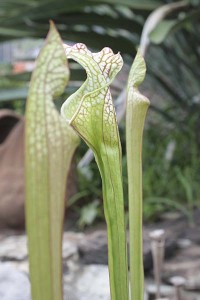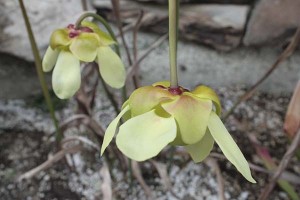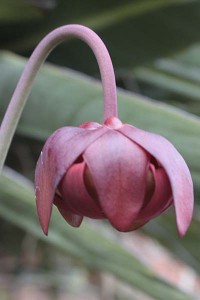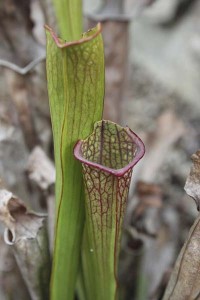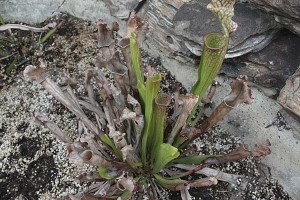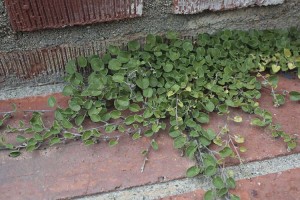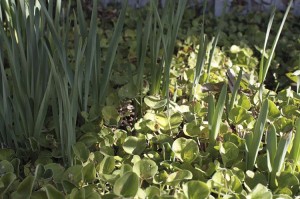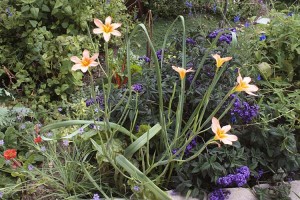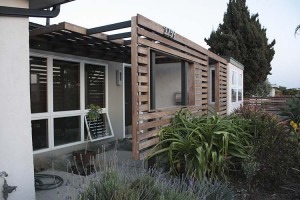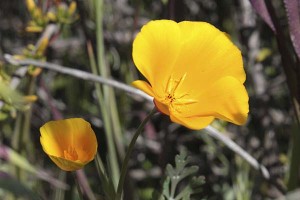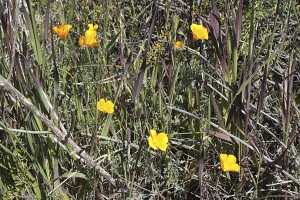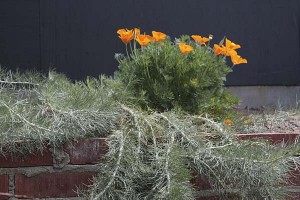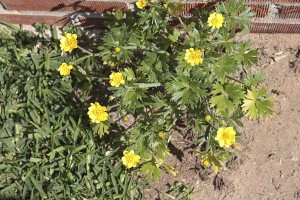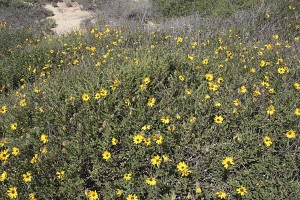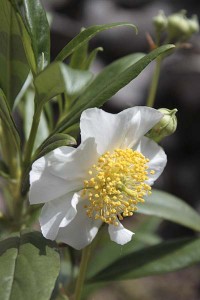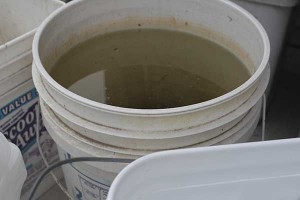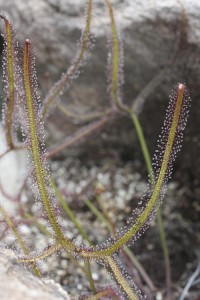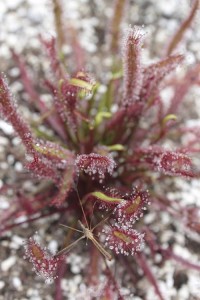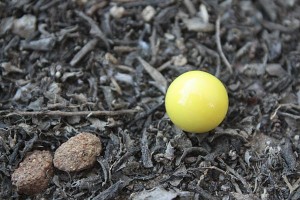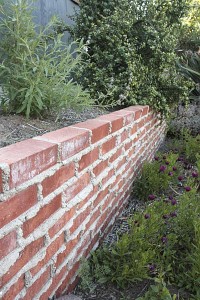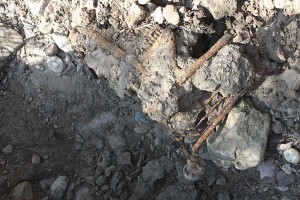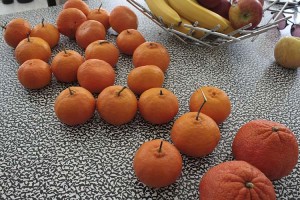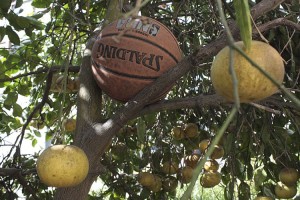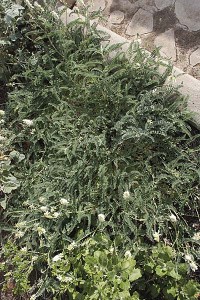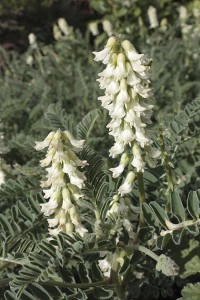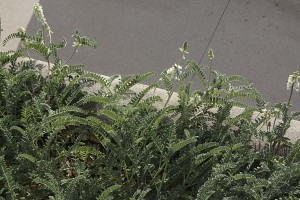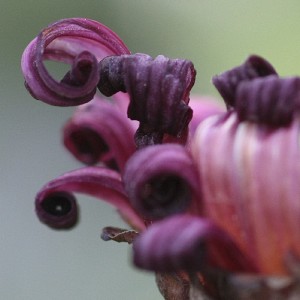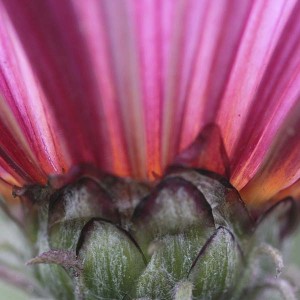Yesterday saw some of my pitcher plants opening up their springtime blooms. These are carnivorous plants that primarily dine on insects that slide into leaves which have evolved into elegant long tubes that contain a digestive juice at the bottom. (See the young Sarracenia leucophylla ‘Tarnok’ pitchers in the picture to the left.)
Almost all the species have evolved so that they flower, offering nectar to their guests, before they develop their mature pitchers–effectively helping assure their reproduction by not dining on their pollinators. These soft yellow flowers appear on Sarracenia alata, the pale or yellow trumpet.
Sarracenia leucophylla ‘Giant’ looks like it’s only a couple days behind in its flowering schedule. This bud is about to open to a dark red little mop of petals.
In the “eat-or-be-eaten” world of carnivorous plants, it’s interesting to see that it’s not the plants that always have the upper hand in their relationship with insects. Here the top of an emerging pitcher has been munched on by some insect.
This was my first pitcher plant, purchased in the flower aisle of the local Trader Joe’s store. (It must have been a special purchase because I’ve never seen them there again…) Like many plants sold for decoration, it came with no label. I want to know the name of everything, so this bothers me to no end. (It could be the common decorative hybrid Sarracenia Judith Hindle, or it might not…)
I’m still fairly new to pitcher plants, so I can’t offer much advice on growing them other than to keep them wet, and to use good-quality water. These are about as far from drought-tolerant plants as you’ll ever encounter. And to that I might add that when given an option to select between potting them in half-peat/half-sand or half-peat/half-perlite, choose the sand mixture, at least if you’re doing a little bog planting. Otherwise the perlite just floats to the top, looking like little styrofoam peanuts that have floated to the surface of a polluted lake. Not pretty. If I were ever to re-do the bog, that would be the first thing I’d do differently.

